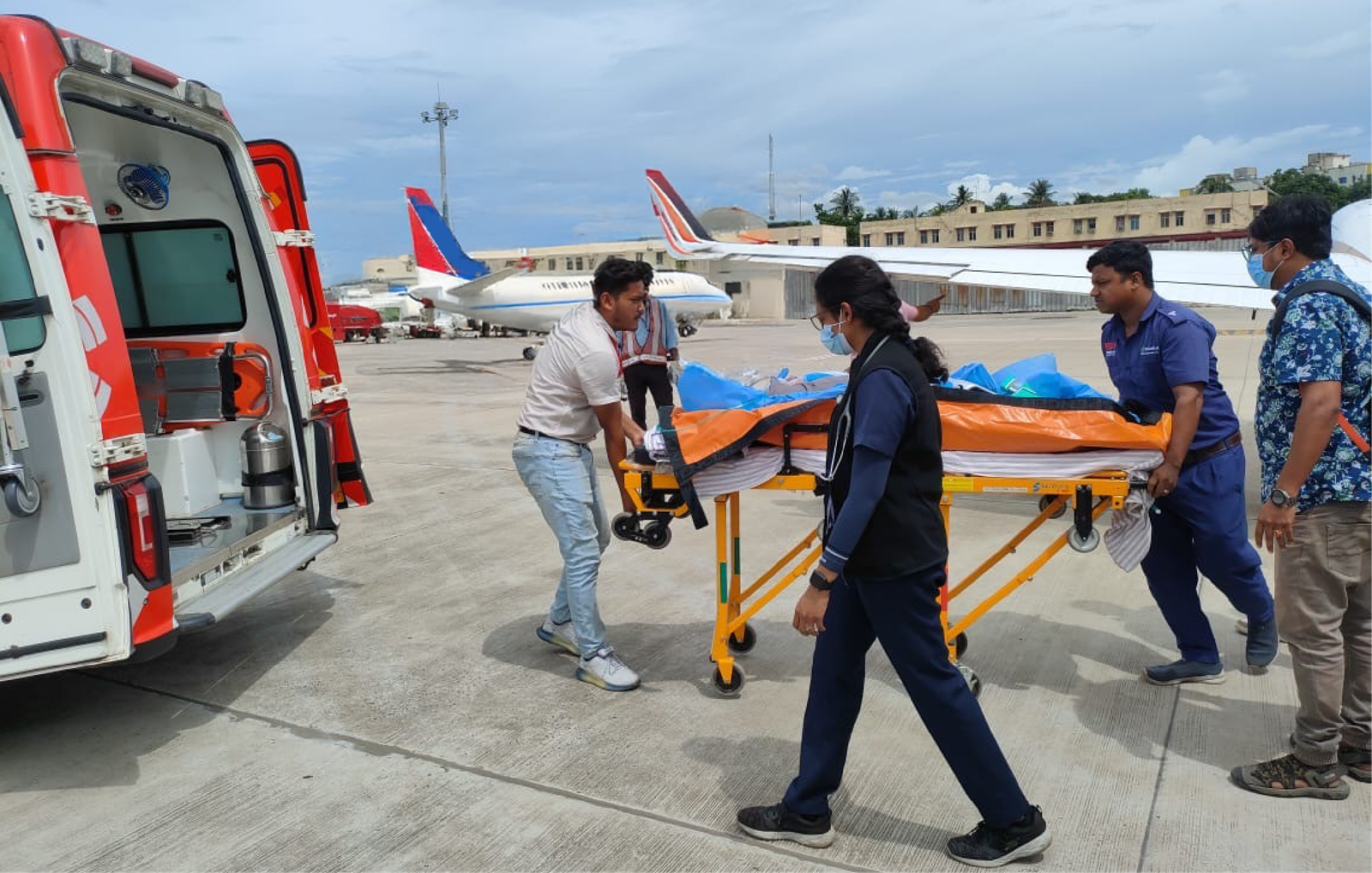When every second counts but not an emergency, ICU air ambulance services provide safe, planned transport for critical patients. Continue reading to learn how care is never interrupted in the air.
Scheduled medical travel with ICU air ambulance care provides critical care patients with uninterrupted intensive care as they are transported from one healthcare institution to another. With well-trained medical personnel, state-of-the-art onboard ICU equipment, and a defined, non-emergency procedure, Red Air Ambulance provides a high-tech option for patients who need critical care during transport.
Taking Critical Care to the Skies: Inside Our Flying ICUs
Not all medical trips are emergencies. Some require precision coordination, medical expertise, and monitoring around the clock. That’s where our services come in, with top-shelf air medical transfer services tailored to non-emergency cases. These aren’t helicopters touching down on roads or fields. They’re fixed-wing aircraft with ICU-level medical equipment, flown by trained professionals, backed up by coordinated road ambulance transfers to and from airports.
Whether you have to transfer a patient to a higher-level medical center for more advanced care or to a center nearer your home for recovery, our flying ICU maintains continuity of care at cruising altitude.
H2: Experience World-Class Care During Airborne Medical Transfers
We transcend mere air transport, providing hospital-level care at 30,000 feet. Our ICU-configured planes are designed for one thing: unbroken, safe, and stable critical care air transport.
Unlike emergency evacuations, our service is for patients whose condition is critical but stable enough to be flown. Consider it a flying extension of the hospital ICU. The cabin becomes a rolling critical care unit, with stretchers, cardiac monitors, ventilators, infusion pumps, and oxygen support systems.
Our staff ensures that the patient’s medical condition is constantly monitored and cared for throughout the entire process- from hospital bed to aircraft stretcher to destination center, uninterrupted by any gap in care.
What Sets Our Critical Care Air Transport Services Apart?
Critical care air transport is not flying a patient from point A to point B. It’s making sure that the same quality of medical supervision and equipment in an ICU is maintained onboard. Here’s how we do it:
- All air transfers are planned ahead, not emergencies.
- Only fixed-wing airplanes are used, not helicopters.
- Take-off and landing require a proper airport.
- A road ambulance is arranged for patients in rural areas to the nearest airport.
- Patients in urban areas are also road transported to the airport, making for a seamless handoff.
Such a system obliterates the uncertainty of emergency evacuations and delivers predictable, safe, and well-monitored medical transfers.
Your Partner in Best Air Ambulance Air Medical Transfer
Our reputation for being a reliable name in the best air ambulance air medical transfer is founded on planning, precision, and reliability in medicine. There’s no air ‘door-to-door’ pick-up. Rather, our professionals have mastered coordinating road segments and air segments to produce a seamless, secure experience.
Every transfer starts with a road ambulance that collects the patient from where they are and takes them to the airport. On completion of the air leg of the transfer, another ambulance completes the transport to the destination hospital. All the details are organized in advance as part of our arranged air transfer service, reducing anxiety and increasing safety.
When to Use a Planned Air Transfer for Sick Patients
Selecting an organized air transfer becomes necessary when:
- A patient requires specialized medical attention found only in another city.
- The present facility does not have ICU-level facilities.
- The family prefers the patient to stay closer for continued treatment or recovery.
- Repatriation or inter-hospital transfers are required after treatment.
Our medical coordinators review each request and coordinate all required steps, from paperwork and medical evaluation to ground arrangements.
Who accompanies Patient Aboard?
Every critical care air transport flight is crewed by professionals selected based on the condition of the patient. The in-flight crew can include:
- ICU nurses
- Critical care doctors
- Anaesthetists
- Paramedics
Prior to takeoff, our crew contacts the treating doctor, examines all the reports, and verifies that the onboard equipment is compatible with the patient’s requirements.
Conclusion: Trust Our Team for Safe, Reliable Air Transfers
Whether traveling between states or returning from overseas, patients are owed the best possible care during midflight. Red Air Ambulance closes that gap with flying ICUs that provide around-the-clock monitoring and protection.
Let us arrange your next scheduled air transfer with proficiency, empathy, and assurance.
Call today- because when critical care flies, every mile matters.
FAQs from Google’s People Also Ask Section
1. What is an ICU air ambulance?
An ICU air ambulance is an aircraft specially equipped with intensive care equipment and trained personnel to transport critically ill, stable patients over long distances.
2. Is an air ambulance exclusively for emergencies?
No. Numerous services, including the ones we offer, are planned, non-emergency transfers for patients who need critical care while in transit.
3. Can air ambulances land everywhere?
No, air ambulances have to utilize designated airports. They don’t land on roads, open fields, or schools.
4. How are patients in remote areas transported?
In remote areas, a ground ambulance brings the patient to the nearest airport where the aircraft is based.
5. Who goes with the patient during an air medical transport?
A specialized medical team- typically a doctor, ICU nurse, and paramedic- rides with the patient to ensure ongoing care.


 18001207004
18001207004
 June 19, 2025
June 19, 2025 Red Health
Red Health